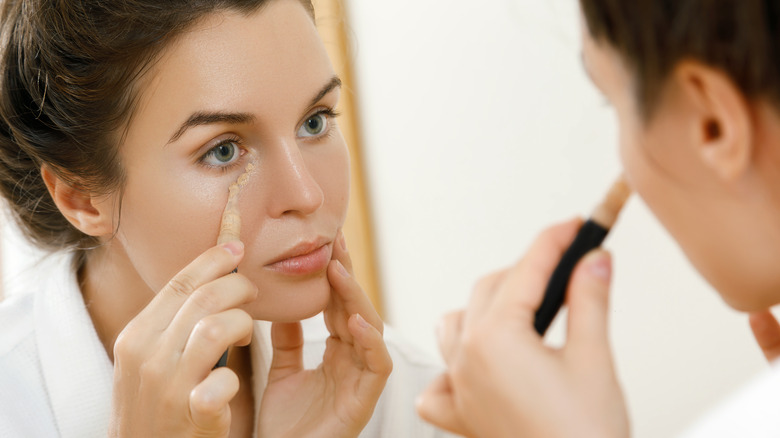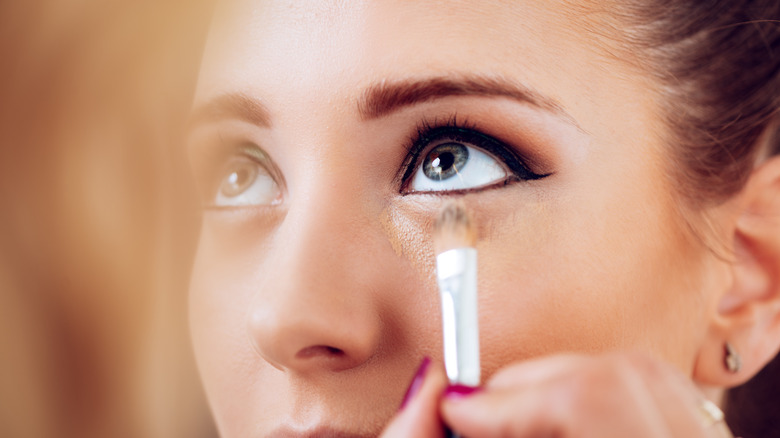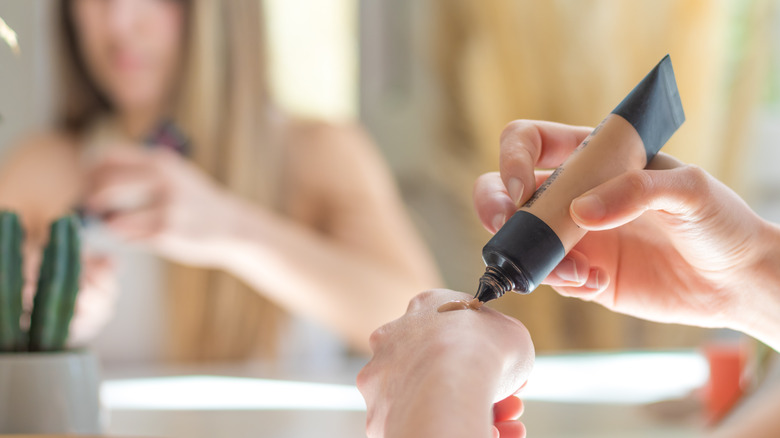The Reason You Should Always Layer Concealer Over Foundation Or Skin Tint
Concealers are a crucial component of any makeup routine, and for good reason. They are essential for achieving a flawless and polished look, no matter your skin type or tone. Whether you're dealing with dark circles, blemishes, or redness, a good concealer can help you achieve a more even and radiant complexion. Many makeup artists consider concealers the secret weapon of their trade, as they can create a range of effects and achieve various looks. One of the main benefits of using a concealer is that it can help you cover up any imperfections or flaws in your skin. This can be particularly important if you're trying to achieve a natural or "no-makeup" makeup look, as it allows you to even out your skin tone without applying a heavy foundation or other products.
Concealer can be used to highlight and contour specific areas of your face, such as your cheekbones or nose, to create a more sculpted look. These beauty products can also brighten your under-eye area and help you look more awake and refreshed, even if you haven't had enough sleep. But using them correctly takes a little practice. One of the most debated points of concealers regards the optimal time to apply them. While the typical way has always been to use them under your foundation, some insist that blending concealer over your foundation provides more coverage. Like many other beauty practices, the typical way of doing things isn't always the correct way — and we're here to explore why.
Layer your concealer on top
When working to achieve a flawless makeup look, the order in which you apply your products makes a big difference. While it might be tempting to apply concealer before foundation or skin tint, layering your concealer on top of these products can actually create an even better look. When you apply foundation or skin tint first, you're creating a smooth and even base for your makeup. By putting concealer on over this base, you can focus on specific areas of your face that may still need extra coverage, such as dark circles, blemishes, or redness. This helps you avoid the dreaded cakey or patchy look that can sometimes occur when you apply concealer directly to bare skin.
Another benefit of layering your concealer on top of foundation or skin tint is that it can help your makeup last longer. When you apply concealer first, you risk rubbing it off or smudging it as you apply other products. By layering your concealer on top, you lock it in place and create a barrier that helps it stay put. This can be especially helpful if you're wearing your makeup for an extended period of time. Although it may seem counterintuitive to put concealer over foundation or skin tint, this technique creates a more natural-looking finish.
The correct way to use face concealer
Using a concealer is essential in achieving a flawless makeup look, but it can be challenging to get right. If you want to avoid common concealer mistakes, there are a few tips and tricks to remember. First and foremost, it's vital to match your concealer to your skin tone. This mission may require a bit of trial and error, but you want to opt for a shade that is one or two shades lighter than your natural skin. This color difference will help you achieve a brighter, more radiant look without looking too stark or unnatural.
Once you have chosen the right concealer shade, it's essential to apply it correctly. People often make the error of applying too much concealer in one area. This excess of product can lead to a cakey or creased appearance, which makes it harder to blend seamlessly into your skin. Start by applying a small amount of concealer to the area you want to cover, then use a beauty blender or brush to blend it outwards in gentle, circular motions. This technique will help you achieve a more natural-looking finish and prevent the concealer from settling into fine lines or wrinkles.


